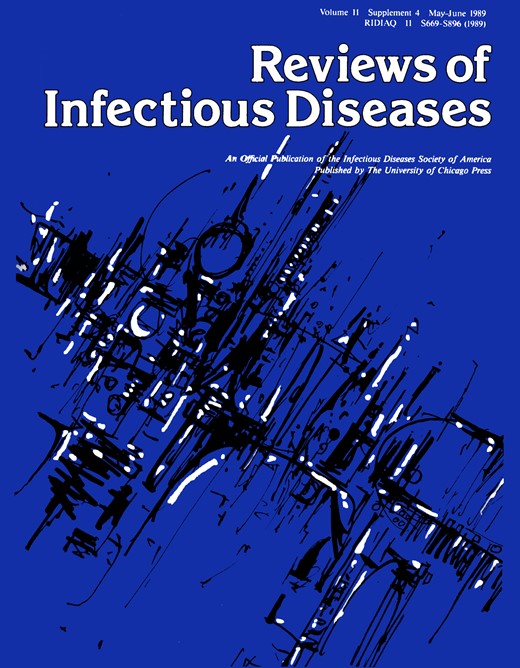-
Views
-
Cite
Cite
John D. Frame, Clinical Features of Lassa Fever in Liberia, Reviews of Infectious Diseases, Volume 11, Issue Supplement_4, May-June 1989, Pages S783–S789, https://doi.org/10.1093/clinids/11.Supplement_4.S783
Close - Share Icon Share
Abstract
Two hundred thirteen cases of Lassa fever (LF) were diagnosed by virus isolation and seroconversion at Curran Lutheran Hospital in Zorzor, Liberia, between July 1980 and April 1986. An additional 40 cases of probable and presumptive LF were diagnosed on the basis of single serum samples. Of the 246 assessable patients, 23 (9%) died; no data were available for seven patients. Five (16%) of 32 pregnant women and three (43%) of seven immediately postpartum women died. Four (26%) of 15 children <12 years died. Case-fatality rates among 125 nonpregnant women and 67 men were ∼6%. Among 150 patients studied in detail, the case-fatality rate was also 9%. Seventeen (11%) of these patients had abnormal bleeding; of these, six (35%) died. Most platelet counts were at low normal to mildly depressed levels. However, serial counts in seven patients suggested a decrease on about days 10–12 of illness. The symptoms of LF in Liberia are those of a viral syndrome. Edema, sometimes marked, is noted in seriously ill patients. A great variation in mortality and incidence of abnormal bleeding is recorded in reported series of LF; it appears that hemorrhage is a marker for cases with a high mortality. The incidence and severity of hearing defects in LF outbreaks vary. Elucidation of a number of clinical problems in LF requires more information on how strain differences affect the pattern of illness.







Comments